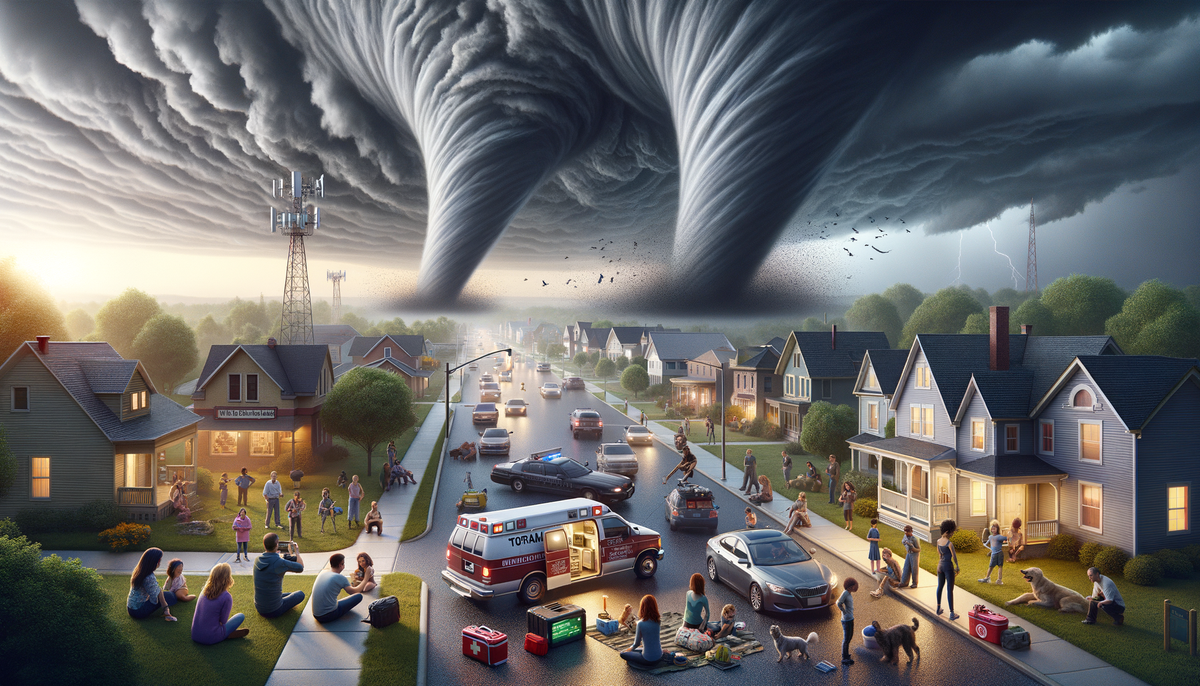Tornado Warning: What You Need to Know
Stay informed on the critical aspects of tornado warnings and their implications for safety and emergency preparedness.

Tornado Warning: What You Need to Know
In recent days, the topic of tornado warnings has dominated headlines, capturing the attention of meteorologists, emergency services, and the public. With severe weather affecting parts of Minnesota, including cities like Rochester and Minneapolis, understanding tornado warnings can be crucial for safety. This blog post aims to delve into the details of tornado warnings, differentiating them from tornado watches, and discussing the latest advancements in meteorological technology that aid in their prediction and delivery.
Tornado Warning: Overview and Key Details
Definition and Purpose
A tornado warning is an urgent communication issued by weather agencies, such as the National Weather Service, to alert the public of impending tornado threats. This alert signifies imminent danger to life and property, prompting immediate protective actions. According to recent reports, as detailed by Yahoo News, such warnings were particularly relevant given the severe weather conditions threatening millions in the Midwest.
Issuing Authority and Triggers
Tornado warnings are typically dispatched by local forecast offices or national weather organizations when certain criteria are met. These include visual confirmations of a tornado by weather spotters, law enforcement, or the public, as well as indications of tornado-like rotations detected by Doppler weather radar. It's important to note that warnings can be issued even without a prior tornado watch if a tornado forms quickly during severe storms.
Duration and Area
The warnings generally apply to specific, localized areas, often a city or a county section, where a tornado is likely or actively occurring. The standard duration of a tornado warning is about 30 minutes, allowing residents in the affected zone a crucial timeframe to seek safety.
Tornado Warning vs. Tornado Watch vs. Tornado Emergency
| Alert Level | Description | Action Required |
|---|---|---|
| Tornado Watch | Conditions are favorable for tornado development. | Be prepared; review safety procedures. |
| Tornado Warning | A specific area is under imminent threat from a tornado. | Take immediate shelter. |
| Tornado Emergency | A confirmed large, severe tornado is impacting a densely populated area. | Seek safe shelter immediately. |
While a tornado watch signals preparedness, a warning demands immediate action, and an emergency entails urgent escape to safety due to potential catastrophic impact.
Recommended Protective Actions During a Tornado Warning
- Seek refuge in the lowest floor of a stable building, ideally a basement or an enclosed room devoid of windows.
- Avoid mobile homes, vehicles, or outdoor spaces; instead, move to the nearest sturdy shelter.
- Protect your head and neck with your arms or a reinforced object from potential debris.
- Follow local weather updates and remain in your shelter location until safety is confirmed.
Issuing Process and Technology
Modern advancements in Doppler radar technology have significantly enhanced the ability of meteorologists to detect storm rotations, providing communities with longer lead times for tornado warnings. Ground reports from trained weather spotters also play a crucial role, supplementing radar information, especially in areas with limited radar visibility. According to CNY Central, real-time ground observations are indispensable in refining and confirming weather forecasts.
Additional Resources and Information
- Tornado warnings are communicated using the SAME code "TOR," ensuring uniformity and clarity in emergency messaging.
- The issuance of a tornado warning does not always follow a tornado watch and can be based solely on current meteorological insights.
- As emphasized by CNN Weather, tornado preparedness is critical, with proper response to warnings often determining survival.
Summary
A tornado warning serves as a critical alert for the presence or near-term arrival of a tornado in specific locations, necessitating immediate protective actions. The differentiation between a watch and a warning, with the latter's higher urgency, underscores the importance of prompt responses. Companies with a stake in tornado prediction and safety protocols can leverage these warnings, ensuring timely and effective communication to safeguard communities and assets.
Call to Action
As an expert in weather forecasting and emergency preparedness, Newsomix.com invites professionals in the field to stay informed and engaged with the latest advancements in tornado warnings. Explore our comprehensive resources and enhance your weather alert systems to proactively handle severe weather threats. Contact us today to learn more about how we can assist in refining your tornado warning protocols.




